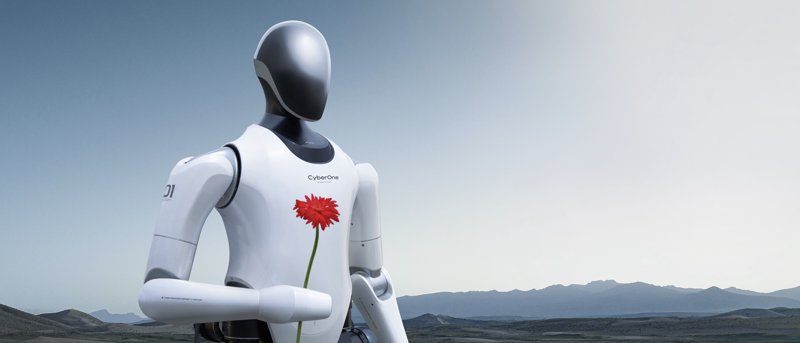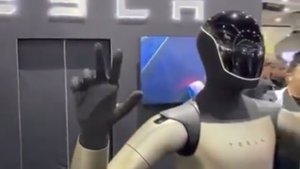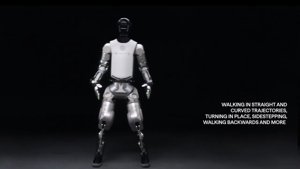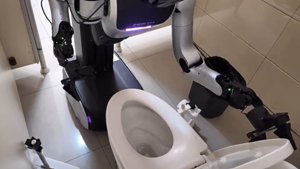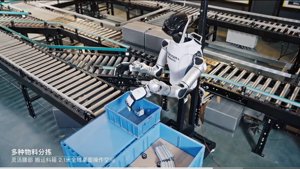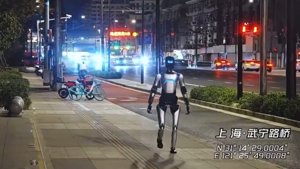Remember August 2022? The time when Xiaomi, the undisputed maestro of affordable smartphones and the silent conqueror of household floors with its robot vacuums, suddenly pulled a full-sized humanoid robot, the CyberOne, out of its hat. The unveiling was, by turns, both genuinely impressive and endearingly clumsy. The robot sauntered onto the stage, presented a single flower to CEO Lei Jun, then proceeded to take a few rather uncertain steps, inadvertently proving that even for advanced artificial intelligence, mastering bipedal locomotion remains a formidable challenge.
The million-dollar question that has lingered in the air ever since: was CyberOne a harbinger of a genuine technological breakthrough, or merely a brilliantly timed marketing gambit? A cheeky jab at its arch-rival, Tesla, which was then gearing up to unveil its own humanoid robot, Optimus. Years have since passed, and CyberOne has remained profoundly silent. It never became a mass-market product, nor have we seen a refined prototype. The robot has seemingly vanished into the ether, while Xiaomi has been busy reaping laurels in entirely different arenas, most notably the electric vehicle market.
The Machine That Promised Emotions
At its 2022 debut, Xiaomi certainly didn’t skimp on the grand promises. CyberOne was described as a 177 cm tall, 52 kg robot, fortified with advanced artificial intelligence. According to the company, the robot was capable of:
- Emotion Recognition: Thanks to its integrated MiAI system, it could purportedly identify 85 different environmental sounds and 45 distinct types of human emotion.
- Spatial Awareness: Utilising its proprietary Mi-Sense depth vision module, it could perceive and reconstruct its surroundings in 3D.
- Human Motion Simulation: Boasting 21 degrees of freedom, it was designed to mimic complex human movements.
The stage demonstration, however, elicited a rather mixed bag of emotions. While the flower presentation was a charming gesture, the robot’s movements fell considerably short of the acrobatic feats routinely demonstrated by Boston Dynamics. It felt more like a pricey, half-baked concept than a market-ready product. Yet, the timing was impeccable: it preceded Tesla’s AI Day, where Elon Musk introduced Optimus’s far more rudimentary initial prototype, by mere weeks. With this move, Xiaomi unequivocally signalled its serious intent to contend in the technological race of the future.

A Shift in Focus: From Floor Plans to the Fast Lane
While the hype around CyberOne subsided, Xiaomi quietly, but with considerably more success, continued its conquest in other domains. The company’s robot vacuum cleaners, such as the X20+ model, are consistently at the forefront of the market. These devices don’t promise emotional support, but they do reliably keep your home spotless, featuring advanced laser navigation, obstacle avoidance systems, and self-cleaning docking stations. Their success lies in the potent combination of practicality and affordability – precisely what CyberOne lacked (at least with its estimated €86-100k price tag).
Xiaomi’s true coup, however, arrived in 2024 with its foray into the electric vehicle market. The Xiaomi SU7 sedan absolutely decimated the Chinese market, achieving staggering sales figures right from its launch. The SU7 seamlessly blends attractive design, impressive performance, and aggressive pricing, proving that Xiaomi is more than capable of mass-producing highly complex, hardware- and software-intensive products. Its success has been so profound that the next model, an SUV dubbed YU7, is already in the pipeline.
Will the Humanoid Make a Comeback?
So, CyberOne faded from the limelight, but has Xiaomi truly given up on it for good? Not necessarily. The experience gained during the humanoid robot’s development – in motor control, sensor integration, and artificial intelligence algorithms – represents an invaluable treasure trove. This knowledge can be leveraged in the development of autonomous vehicles, more advanced household robots, or even factory automation solutions.
Today, the CyberOne project is perhaps best viewed as a technological flex. A clear signal to the market and its competitors that Xiaomi possesses the capabilities and ambitions to ascend to the ranks of tomorrow’s defining technology companies. The SU7’s resounding success has, moreover, laid the financial and technological groundwork upon which the company might one day revisit its humanoid robot plans – but next time, the focus won’t just be on handing over a single flower, but on achieving genuine market introduction. The spirit of CyberOne lives on in Xiaomi’s more successful, down-to-earth products, and it’s only a matter of time before it takes on corporeal form once more.
